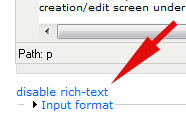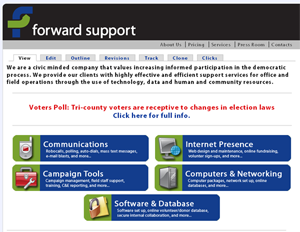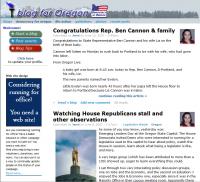A question that comes up a lot is how to change your front page. People are looking for something called index or index.htm, since that is how they've controlled the front page in their sites previously.
Drupal does not work that way. There is not an "index" page, and no pages have .htm or .html after them. They don't have a .anything at all. Page names are things like:
/home
/events
/2007/05/28/act_blue_contributions_now_available
The one thing you should know is that you shouldn't put any spaces in web site names (otherwise known as URL aliases or a URL path). Instead, use the underscore so that all web browsers and e-mail programs handle the links properly.
Ok, so now what do I do?
So now that you know there isn't an index page, how do you change your front page? You actually have two options:
- A front page that only houses one node.
- A front page that houses "teasers" to a variety of different nodes.
I'll now go over the differences, an example of each, and how to do it.
A front page that only houses one node
You would use this if you want to have a traditional front page. This may be using tables, if you'd like, to create a front page. This means your front page probably doesn't change that often -- it's more likely to be very little lengthy text (maybe a welcome) with links off to other content.
An example would be our web site, http://www.forwardsupport.com
The center portion of the front page is a node that uses tables. You'll notice that when I am logged in, I get tabs above the main portion of the site (view, edit, outline, etc.). To change the content on the front page, I just click the "Edit" tab.
The front page of the DPO's web site also used this type of front page before going to a more advanced option (block regions).
To create this kind of front page, first create your page. Be sure to set the URL path to something obvious like "home" (or even "index," if you'd like). I use "home" because it works well with search engines.
Then go to the "Site Information" page, which is located under your administer menu.
Scroll down to the bottom of that page. There you'll find a setting for the default front page. Change "node" to whatever you used as the URL path for your page:

Hit "Save Configuration."
This will now change your front page.
A front page that houses "teasers" to a variety of different nodes
Your second option is a page that changes whenever you "promote" an item to the front page.
An example of this type of site is Blog for Oregon.
The address to this page is /node.
You'll notice this page has two nodes visible on the front page (there are 10 in total). These nodes show up on the front page because they have been "promoted" to the front page.
Obviously more than 10 nodes have been promoted to the front page in the year+ that the site has been online. You can get to older items via links at the bottom of the front page:
![]()
There's also an icon (the orange one on the left) that gives site visitors access to the RSS feed for your site.
Any time you add an event, blog entry, page, etc., you can have it be "promoted" to the front page. If you don't have teasers set up on your site, it will automatically pull the first 600 characters (you can change this on your administer menu: /admin/content/node-settings).
You can also control what is pulled as the "teaser" by using a comment that tells it where to break. That comment is: <!--break-->
A comment is a piece of text that does not show up on the page (but can be seen in the html). Typical uses are for documentation.
If you insert that text where you want the teaser to end, it will use that instead of the first 600 characters.
Note: You must add that comment when the rich-text editor is off. This means clicking on "disable rich-text" under the text area.Otherwise the editor just sees the comment as text.

Items will be added to your front page in date order, newest first. Any item that has been set as "sticky" will be placed at the top of the page, regardless of age.
You'll find the "promote to front page" and "set as sticky" options at the bottom of your page creation/edit screen under "Publishing options."
What is this other stuff that is showing up on my front page?
If you have other text that is showing up in the "main" section on your front page, check your Site Information page. If you've set a Slogan or Mission, these can show up on the front page as well. You can either delete the text, or on the Configuration tab on the Theme page (/admin/build/themes), you can turn them off.
The footer on that page controls the text that shows up at the bottom of the page.



